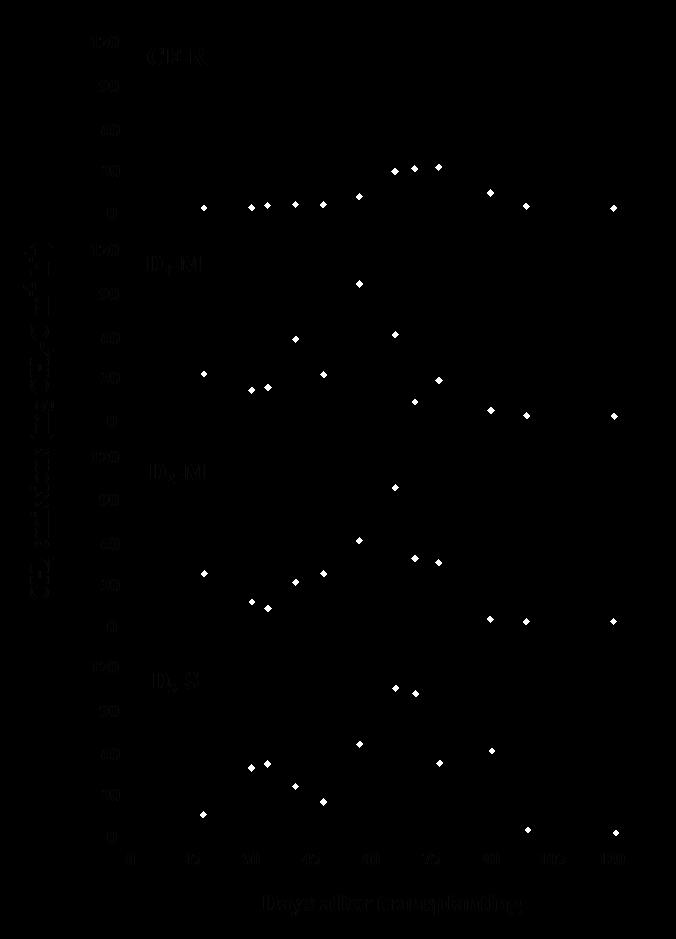This study was carried out at Kita-mura near Bibai located in central Hokkaido, Japan, with the intention of investigating the effects of different agronomical managements on CH4 emissions from paddy fields on mineral soil over peat under farmers’ actual management conditions in the snowy temperate region. Four fields were studied, including two fields with twice drainage (D1-M and D2-M) and also a single-drainage field (D3-S) under single-cropping yr-1 and a paddy-fallow-paddy crop rotation as their systems. The other field was under single cropping yr-1 with continuous flooding (CF-R) in the pattern of soybean (upland crop)-fallow-paddy. The mineral-soil thickness of these soil-dressed peatland fields varied from 20 to 47 cm. The amount of crop residues leftover in the fields ranged from 277 to 751 g dry matter m−2. Total CH4 emissions ranged from 25.3 to 116 g CH4-C m−2 per growing season. There was a significant relationship between crop-residue carbon (C) and total CH4 emissions during the rice-growing season. This study, therefore, CH4 fluxes from paddy soils in that there was a strong interaction between readily available C source for methanogens and anaerobic conditions created by water management. Despite the differences in water regime and soil type, the average values of straw’s efficiency on CH4 production in this study were significantly higher than those of southern Japan and statistically identical with central Hokkaido. Our results suggest that the environmental conditions of central Hokkaido in association with crop-residue management had a significant influence on CH4 emission from paddy fields on mineral soil over peat. Rotation soybean (upland)-to-paddy followed by drainage twice practices also largely reduces CH4 emission. However, mineral-soil dressing on peat could have a significant impact to suppress CH4 emission from beneath the peat reservoir.

